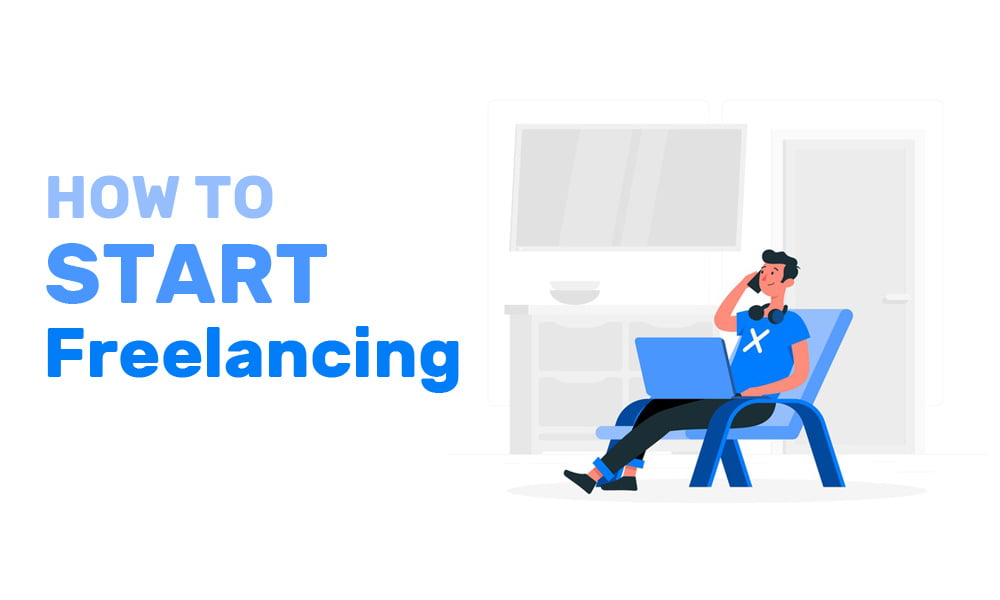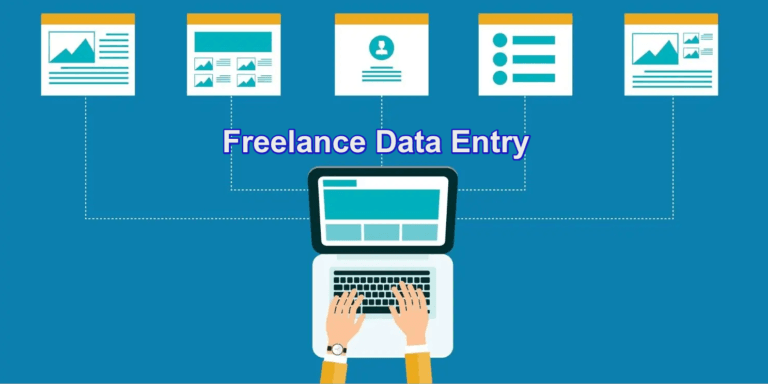The freelance industry has a bright future for anyone looking for freedom, flexibility, and the chance to follow their hobbies. Freelancing can offer a realistic route to reaching your objectives, whether trying to supplement your income, break free from the 9-to-5 grind, or want to make a full-time profession out of your abilities. This tutorial will lead you through all the crucial phases of beginning a freelancing profession, from figuring out your specialty to handling clientele and expanding your company.
Do you want to start working as a freelancer but don’t know where to start? You may work for yourself and select your projects and clientele when you freelance, which is a terrific opportunity. Although it may be an interesting and fulfilling professional path, newcomers may find it daunting.
Understanding Freelancing
Instead of working as regular employees, freelancers provide their talents and services to clients on a project or contract basis. Freelancing is a type of self-employment. The flexibility to select their jobs, create their timetables, and work from almost any place is enjoyed by freelancers.

Benefits of Freelancing
- Flexibility: Independent contractors have more control over their work hours and may operate from any place, which improves work-life balance.
- Autonomy: Independent contractors are free to select the tasks they do and the companies they work with.
- Opportunities for Diversification: Working on a range of tasks as a freelancer may help people expand their skill sets and advance their careers.
- Income Potential: Freelancers may be able to make more money than regular workers since they can choose their rates and take on a variety of jobs.
Types of Freelancing Jobs
Numerous fields and industries use freelance work. Typical categories of freelancing work include:
- Writing and Editing: copywriting, technical writing, editing, proofreading, and content creation.
- Administrative and Support: Project management, data entry, virtual help, and customer support.
- Marketing and Sales: SEO, social media management, digital marketing, and sales advice.
- Professional services and consulting: career coaching, legal assistance, financial advice, and business consulting.
- Design and Creativity: Illustration, photography, video production, graphic design, and web design.
- Development and Technology: IT assistance, software development, mobile app development, and web development.
Identifying Your Niche
Finding your specialization is the first step in embarking on a freelance career. This entails evaluating your abilities, preferences, and knowledge to ascertain the kind of freelancing that best fits your needs.
Questions to Consider:
- What are my strongest skills and talents?
- What subjects or activities am I passionate about?
- What experience do I have that can be translated into a freelance service?
- Are there specific industries or markets I am interested in working with?
By answering these questions, you can narrow down your options and identify potential areas for your freelance business.
Market Analysis
Doing market research comes next when you have a firm grasp of your abilities and interests. This entails determining your competition, comprehending your target market, and assessing the need for your services.
Steps for Market Research:
- Analyze Demand: To determine the level of demand for your services, use internet resources and platforms. Search for lists of freelance gigs, employment openings, and trends related to your preferred specialty.
- Analyze the Competition: Look for other independent contractors or companies that provide related services. Examine their services, costs, customer base, and advertising tactics.
- Determine Who Your Ideal Client Is: Decide who the perfect customer is for you. Take into account elements like the industry, size of the business, location, and particular requirements.
How to Define Your USP (Unique Selling Proposition)
Your USP, or unique selling proposition, is what makes you stand out from other independent contractors in your industry. It’s the special value or advantage you provide to your customers that they won’t find anywhere else.
The Definition of Your USP:
- Determine Your Strengths: Emphasize the abilities and knowledge that set you apart.
- Express Your Worth: Make sure your clients understand the advantages of working with you, such as the provision of quality, efficient, innovative, or individualized service.
- Recognize Client Pain Points: Determine the typical issues or difficulties that your target customers encounter and how your services might help them.
Considerations for Setting Up Your Freelance Business Legally
To make sure you’re working inside the law, it’s crucial to address the legal issues of freelancing before you begin giving your services.
Important Legal Points to Remember
- firm Structure: Choose a limited liability corporation (LLC), partnership, or sole proprietorship as the legal form for your freelancing firm.
- Permits and Licenses: Find out what licenses or permissions are required in your area or sector for you to work as a freelancer.
- Contracts: Use contracts to specify the conditions of labor, remuneration, and deliverables for all of your freelancing assignments. Contracts safeguard your consumers as well as you.
- Insurance: To guard against any hazards, think about getting business insurance, such as errors and omissions or professional liability.
Locating Customers with Networking Techniques
One effective strategy for locating freelancing customers is networking. Developing contacts inside your sector may result in recommendations, joint ventures, and new business prospects.
Successful Networking Techniques:
- Attend Industry Events: To network with other freelancers and possible clients, and take part in conferences, workshops, and networking events.
- Join Professional Groups: Enroll in the appropriate organizations or groups for professionals. These organizations frequently offer resources and networking possibilities.
- Utilize Current Relationships: Make contact with people in your current network, such as friends, family, and past coworkers. Inform them of your availability as a freelancer and request recommendations.
- Online networking: Make connections with industry colleagues and possible clients by using professional networking sites like LinkedIn and social media platforms. Join communities that interest you and take part in conversations.
Handling Clients and Projects
Clearly Outlining Expectations
For a freelancing job to be effective, there must be clear expectations. They guarantee that you and the client are in agreement and assist avoid misunderstandings.
How to Clearly State Your Expectations:
- Define the Work Scope: Clearly state the objectives and tasks involved in the project. Indicate what is and is not included.
- Establish benchmarks: Divide the project into manageable deadline-driven milestones. This guarantees on-time delivery and aids in progress tracking.
- Consent to Communicate: Decide on the best communication methods and how often you want updates. Frequent communication maintains the client’s awareness and participation.
- Make Payment Terms Clear: The conditions of payment, such as the total cost, the payment plan, and any upfront deposits, should be agreed upon.

Crafting Your Online Identity: Building a Strong Freelance Profile
You might think of your internet presence as your virtual showroom in the digital freelance world. It’s your initial point of contact with prospective customers and an effective way to highlight your qualifications. Creating a compelling and eye-catching freelance profile is a skill that may make a big difference in your career. These are important things to think about:
- Professional and Interesting Profile: You want to have a likable and professional profile. It must strike a chord with the people you want to reach. Provide a crisp photo, an engaging bio, and information that accurately represents your professional brand. Telling a story about yourself and the value you can provide to a project is more important than just listing your talents.
- Display Your Best Work: An essential part is your portfolio. Show off your finest and most pertinent work. Provide a range of writing examples if you’re a writer, and a gallery of your designs if you’re a designer. Make sure your portfolio represents your greatest qualities and is current for the kinds of employment you are looking for.
- Unambiguous Service Offerings: Clearly state the services you provide. Attracting the proper sort of clients and projects is made easier by this clarity. Jobs that fit your skills may be found more easily with a clear and simple description of your services, whether it’s coding, graphic design, or content development.
- Testimonials and Reviews from Past Clients: Advocacy from prior clients may be quite compelling. Urge customers to provide testimonials or reviews. Credibility is increased and prospective clients are given an idea of what it’s like to work with you thanks to these endorsements.
Long-Term Freelancing Success: Strategies for Sustainability
More than skill and diligence are needed to maintain a successful freelancing profession; ongoing adaptability and strategic planning are also necessary. This last segment looks at important tactics for long-term success in a freelance profession.
- Continuous Skill Development: With changing trends and technology, the freelancing market is dynamic. Make sure you’re always improving your talents to be competitive. Participate in online classes, attend seminars, and keep up with developments in the field. This dedication to learning keeps you current and in demand while improving your service offerings.
- Developing Solid Client Relationships: The lifeblood of freelancing is referrals and recurring revenue. Establish trusting bonds with your clients by producing high-caliber work, keeping your word, and communicating professionally. A consistent stream of work is ensured by happy customers who are inclined to use you again and refer you to others.
- Spreading Your Revenue Streams: Avoid Putting All Your Eggs in One Basket. By looking into other occupations, passive income options, or even teaching your abilities, you may diversify your income. This diversity can lower the risk related to client volatility and offer financial stability.
- Time management and organization: Juggling several projects and clients requires effective time management. Using traditional calendars or digital tools, create an organizing strategy that suits your needs. Productivity may be increased and burnout can be avoided by clearly defining limits and practicing effective time management.
Establishing a freelancing profession may be thrilling and difficult at the same time. You may set yourself up for success by learning the principles of freelancing, figuring out your specialization, and building a solid company foundation. Getting work, handling projects well, and always honing your craft are all necessary for creating a long-lasting freelancing career.
Although freelancing has many advantages, it also has its share of difficulties. However, you may overcome these obstacles and succeed in the freelance industry if you have the appropriate techniques, resources, and attitude. Recall that although the path may call for endurance and patience, the benefits of adaptability, independence, and the chance to pursue what you love make the journey worthwhile.








